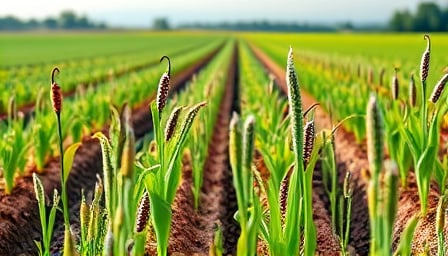Corteva Inc. Faces a Strategic Crossroads
Corteva Inc., the American agriscience giant listed on the New York Stock Exchange and valued at roughly $50 billion, is confronting a pivotal decision that could reshape the future of its seed and pesticide divisions. Over the past week, a cascade of reports—ranging from Benzinga to Bloomberg‑style outlets—has underscored the company’s contemplation of a corporate split.
The Core of the Controversy
The latest filings and analyst chatter indicate that Corteva is evaluating the de‑merging of its two principal business units: seed production and crop protection (pesticides and related chemicals). This proposed division is not a casual restructuring; it represents a strategic move to isolate the seed unit from potential liabilities that may loom in the agricultural and regulatory landscape.
- Benzinga reported that “Corteva Eyes Breakup To Shield Seed Unit From Future Risks.”
- Multiple feeds (including Investopedia, Seeking Alpha, and Yahoo Finance) corroborate that the split is under serious consideration, with the company allegedly seeking to “protect” its seed operations from the volatility that often plagues pesticide revenues and associated regulatory scrutiny.
Market Reaction
The market has reacted with a brisk uptick. On September 12th, Corteva shares surged following the speculation of a breakup. The momentum persisted into September 15th, with trading volumes reflecting heightened investor interest. While the stock’s close price on September 11th was $74.29, the 52‑week high of $77.41 (achieved on July 2nd) and 52‑week low of $53.40 (April 6th) illustrate the stock’s volatility—a volatility that could be exacerbated by a split.
Why a Breakup Matters
Risk Containment
The seed market faces unique regulatory and environmental risks, including seed patent disputes and growing scrutiny over genetically modified organisms. By spinning off the seed unit, Corteva could insulate it from the financial repercussions of future litigation or policy shifts that might otherwise drag down the entire company.Capital Allocation Efficiency
Historically, the pesticide division has delivered consistent cash flows, while the seed unit has required significant R&D investment. A split would allow each entity to raise capital and deploy resources in ways that align more closely with their distinct growth trajectories.Valuation Clarity
Investors have long debated whether the market is assigning the appropriate multiples to each segment. A dedicated seed company could command a higher price‑to‑earnings ratio, potentially unlocking shareholder value that is currently being swallowed by the broader conglomerate structure.
The Counterarguments
Not everyone is convinced that a split is the optimal path. Critics argue that:
- Synergy Loss: Integrated operations between seed research and pesticide development create cross‑selling opportunities that could be diluted if the entities operate separately.
- Execution Risk: The logistics of unbundling a global enterprise—reallocating personnel, technology, and supply chains—poses significant operational challenges and costs.
- Regulatory Hurdles: Both units are heavily regulated; a split could trigger additional compliance requirements that outweigh the anticipated benefits.
Current Standing and Future Outlook
As of the latest updates, Corteva has not yet made an official announcement. The company’s board is reportedly deliberating the merits of a split, weighing the potential for improved risk management against the operational upheaval that would ensue. Market participants, meanwhile, are poised for a decisive move that could either bolster or undermine investor confidence.
In a sector where stability is hard-won and volatility is the norm, Corteva’s potential breakup represents a critical juncture. Stakeholders will be watching closely as the company navigates this complex terrain, with the promise that the outcome could redefine the competitive landscape of agriscience for years to come.
